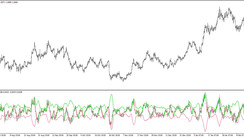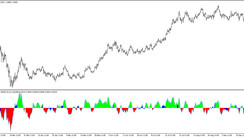Introduction
In the dynamically evolving landscape of trading, the execution of well-planned orders stands as a linchpin to achieving success. Whether you are venturing into stocks, currencies, or futures, a comprehensive grasp of the diverse order types at your disposal can significantly fortify your trading strategies. This guide aims to unravel the complex web of trading orders, shedding light on how one entity's decision to buy can seamlessly intertwine with another's to sell, thereby orchestrating the lively heart of the market ecosystem.
Key Takeaways
- Market Orders: Ensuring rapid execution, yet with no price guarantee.
- Limit Orders: Offering a guaranteed price, but bearing the risk of non-execution.
- Stop Orders: These function as a buffer against losses, initiating a market order when a specific trigger price is reached.
- Complex Orders: The amalgamation of basic orders to devise intricate strategies such as stop-limit and market-if-touched orders.
The Fundamentals of Order Placement
As you commence your trading expedition, mastering the art of distinguishing between buy and sell orders becomes a prerequisite. These instruments not only facilitate your entry and exit into the trading world but also dictate the profitability of your ventures. Understanding the underlying trends that govern the market can aid in making informed decisions.
Buy orders serve as your entry point into a potential prosperous venture, expected to be followed by a sell order to secure profits. Conversely, predicting a downturn in the asset’s value would lead a savvy trader to employ the strategy of "shorting a stock", which entails entering with a sell order and exiting with a buy order, thereby capitalizing on the asset's depreciation.
Diving into Market Orders (MKT)
Market orders stand as a beacon for traders seeking prompt transactions at the existing market price. This urgency, however, comes at the expense of a potential deviation from the anticipated price due to the fluctuating market conditions, a scenario termed "slippage." It’s imperative to grasp the dynamics of ask and bid prices to navigate the volatile waters of market orders successfully.
As a trader venturing into the realm of MKT, being cognizant of the nuances that influence the final transaction price is vital. This segment unveils how minute fluctuations in the short span between placing and executing an order can significantly impact your trading outcomes, empowering you to make well-informed decisions.
Exploring Limit Orders (LMT)
Limit orders emerge as a protective barrier against adverse market prices, facilitating transactions only at a specified or a more favorable price. While this approach offers the solace of a secured price, it harbors the risk of non-execution if the market doesn't favor the pre-set conditions. The art of trading with limit orders marries patience with strategic price setting, paving the way for a favorable trade albeit with a lingering risk of missing potential opportunities.
This segment equips you with insights into setting an optimal limit price that aligns seamlessly with your trading aspirations, ensuring you neither overpay while buying nor undersell while exiting.
Unpacking Stop Orders (STP)
Stop orders function as a shield, initiating a market order the moment a predetermined price threshold is met. This mechanism, essentially crafted to mitigate losses, requires a strategic setting of the stop price relative to the anticipated asset movement. Embark on a journey through vivid examples that demystify the workings of stop orders, offering a protective layer against rapid market downturns and safeguarding your investments.
Getting Acquainted with Stop-Limit Orders (STPLMT)
The stop-limit order amalgamates the principles of stop and limit orders, presenting a strategy endowed with enhanced control over the potential execution price. This section elucidates how articulating different stop and limit prices can weave a safety net for your investments, achieving a harmonious interplay between price assurance and execution risk.
Understanding Trailing Stop Orders
Trailing stop orders stand as dynamic allies, automatically adjusting the stop price in harmony with market fluctuations. Be it anchored to a fixed amount or a percentage of the market price, these orders offer a resilient approach towards shielding your earnings from market volatility, ensuring that your profits rise with the increasing market price.
Exploring Market-if-Touched (MIT) Orders
MIT orders harmonize the rapidity of executions with an opportunity to strike at your target price, morphing into a market order the instant the specified price is touched. Delve into the subtleties of establishing a judicious target price, understanding the phenomenon of slippage that is inherent to MIT orders, and leveraging them to your advantage.
Grasping Limit-if-Touched (LIT) Orders
Venture into the sphere of LIT orders, where a dual setting of trigger and limit price governs the conversion into a limit order. This approach offers nuanced control over the execution price, while simultaneously nurturing the possibility of non-execution due to unfavorable market conditions.
Conclusion
Trading orders stand as reliable allies in the vibrant trading ecosystem, each offering a unique blend of advantages tailored to diverse trading needs. From the agile market orders to the secured confines of limit orders, and the vigilant stop and stop-limit orders to the adaptive trailing and touched orders; mastering these tools can significantly augment your trading prowess, steering you towards a trajectory of successful trading endeavors.
FAQ
How Do I Select the Appropriate Order Type?
The selection pivots on your trading strategy and the nature of your position. This section offers detailed examples, illustrating how varying market dynamics and individual trading philosophies dictate the choice of the order type, guiding you to make judicious decisions.
Why Are There Various Order Types?
Brokerages design a spectrum of order types to cater to an array of investor needs, offering a rich palette of trading avenues. Delve deeper to understand how partnering with the right brokerage can unveil a world of opportunities, furnishing you with a versatile arsenal of order options.





